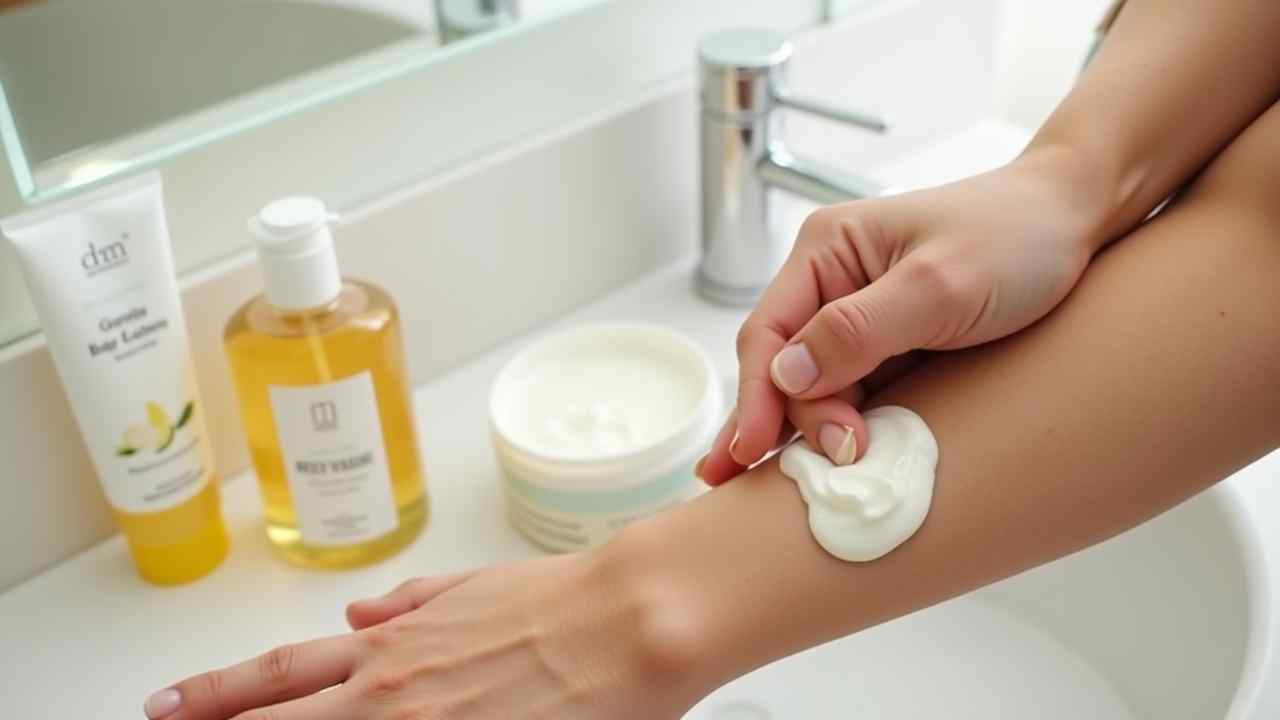
✨ How to Treat Rough Patches on Skin (A Guide to a Smoother Texture)
✨ How to Treat Rough Patches on Skin (A Guide to a Smoother Complexion) ✨
Rough patches on the skin are a very common issue. You might notice them on your arms, legs, elbows, or knees. This bumpy or scaly texture can be frustrating. It is usually caused by a buildup of dead skin cells and a lack of hydration.
The good news is that this is a highly treatable condition. So, how do you treat rough patches on skin? The secret is a consistent routine. It should focus on two key actions: exfoliation and moisturization. This powerful combination can restore your skin's smoothness.
This guide will walk you through the most effective methods. We will cover the best ingredients to look for. Let's start your journey to softer, smoother skin. ✅
Medical Note: If your rough patches are very red, itchy, painful, or you suspect a condition like eczema or psoriasis, please see a dermatologist for a proper diagnosis.
Step 1: How Do You Exfoliate to Remove Roughness?
Exfoliation is the most important first step. To treat rough patches on skin, you must first remove the built-up surface layer. This layer of dead skin cells is what is causing the rough texture. Exfoliation reveals the smoother, healthier skin underneath.
Why is chemical exfoliation often best?
Chemical exfoliants are often more effective for this issue. They work by dissolving the "glue" that holds the dead skin cells together. This provides a more even and thorough exfoliation. The best ingredients to look for in a body lotion or wash are:
- Alpha-Hydroxy Acids (AHAs): Look for products with glycolic acid or lactic acid. These are the gold standard for smoothing rough texture and brightening the skin.
- Urea: This is a fantastic ingredient for very rough skin. It is a keratolytic, meaning it helps to break down the excess keratin protein that causes bumps. It is also a powerful hydrator.
Is physical exfoliation okay?
Yes, gentle physical exfoliation can also be helpful. You can use a soft dry brush on your skin before showering. A gentle sugar scrub can also be used in the shower 2-3 times per week. Just be careful not to scrub too hard.
Step 2: How Do You Deeply Moisturize and Hydrate the Skin?
After you exfoliate, the new skin is exposed. It needs deep hydration to stay smooth and healthy. A good moisturizer is essential. It will soften the skin and help to repair its protective barrier.
What are the best moisturizing ingredients?
You need a rich, nourishing moisturizer. Thin lotions might not be enough. Look for thick creams or ointments with these powerful ingredients:
- Ceramides: These are the natural lipids that form your skin's barrier. They are crucial for locking in moisture. 🛡️
- Hyaluronic Acid and Glycerin: These are humectants that draw water into the skin.
- Shea Butter: This is a rich emollient that softens and protects the skin.
What is the best application technique?
The best time to apply your moisturizer is right after a shower or bath. Gently pat your skin with a towel, but leave it slightly damp. Applying your moisturizer to damp skin helps to trap the most moisture. This keeps your skin hydrated much longer. 💧
⭐ What Does a Simple Daily Routine for Rough Skin Look Like?
Consistency is the key to success. Here is a simple but effective daily routine. It will help you treat rough patches on your skin. This plan combines exfoliation and hydration perfectly.
In the Morning:
- Rinse your skin.
- Apply a simple, hydrating moisturizer with ceramides.
- If the skin is exposed, apply a broad-spectrum sunscreen. ☀️
In the Evening:
- After a lukewarm shower, while your skin is still damp...
- Apply your exfoliating treatment lotion to the rough patches. This is your lotion with AHA or urea.
- If needed, you can layer a simple moisturizer on top after it absorbs.